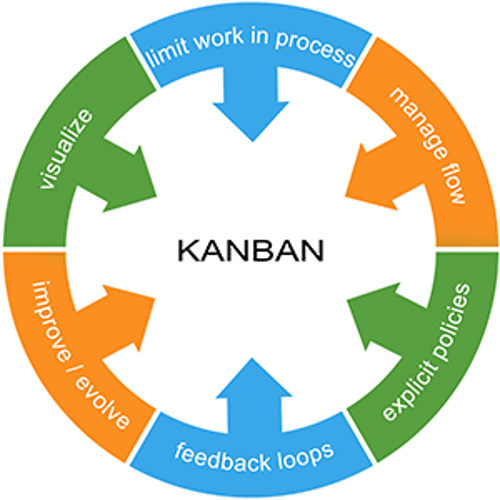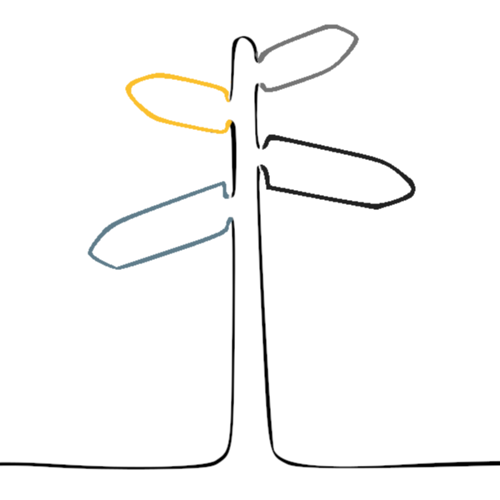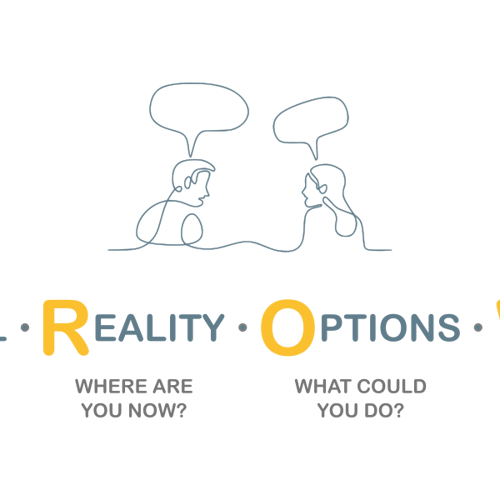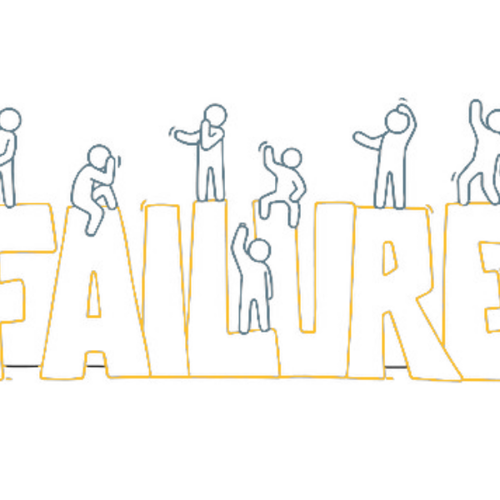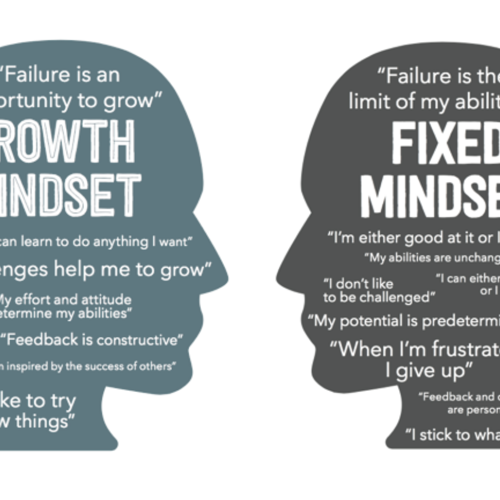involving people or groups working together to produce something
We all know that being cooperative and collaborative are instinctively good behaviours; but do we really know the difference – I doubt we do.
In most companies, teams will usually interact with one another through either collaboration or cooperation:
- Cooperation focuses on the achieving of a goal through mutual independence. That is to say individuals and teams work alongside each other to achieve an ultimate through their individuals goals. Each individual or team respects each other and will share ideas, resources, information, etc as and when; trying to achieve a level of transparency. They are both independent of each other – with the autonomy to approach the goal as they see fit – whilst being dependent on each other to achieve the ultimate goal
Collaboration is being in a state of constant interdependence and rather than the sharing of ideas, the group focuses on the generation of new ideas and development. Constant interdependence is sometimes an uncomfortable state to begin with and it’s vital that mutual trust exists and vulnerability in the group is felt.
Both cooperation and collaboration are needed
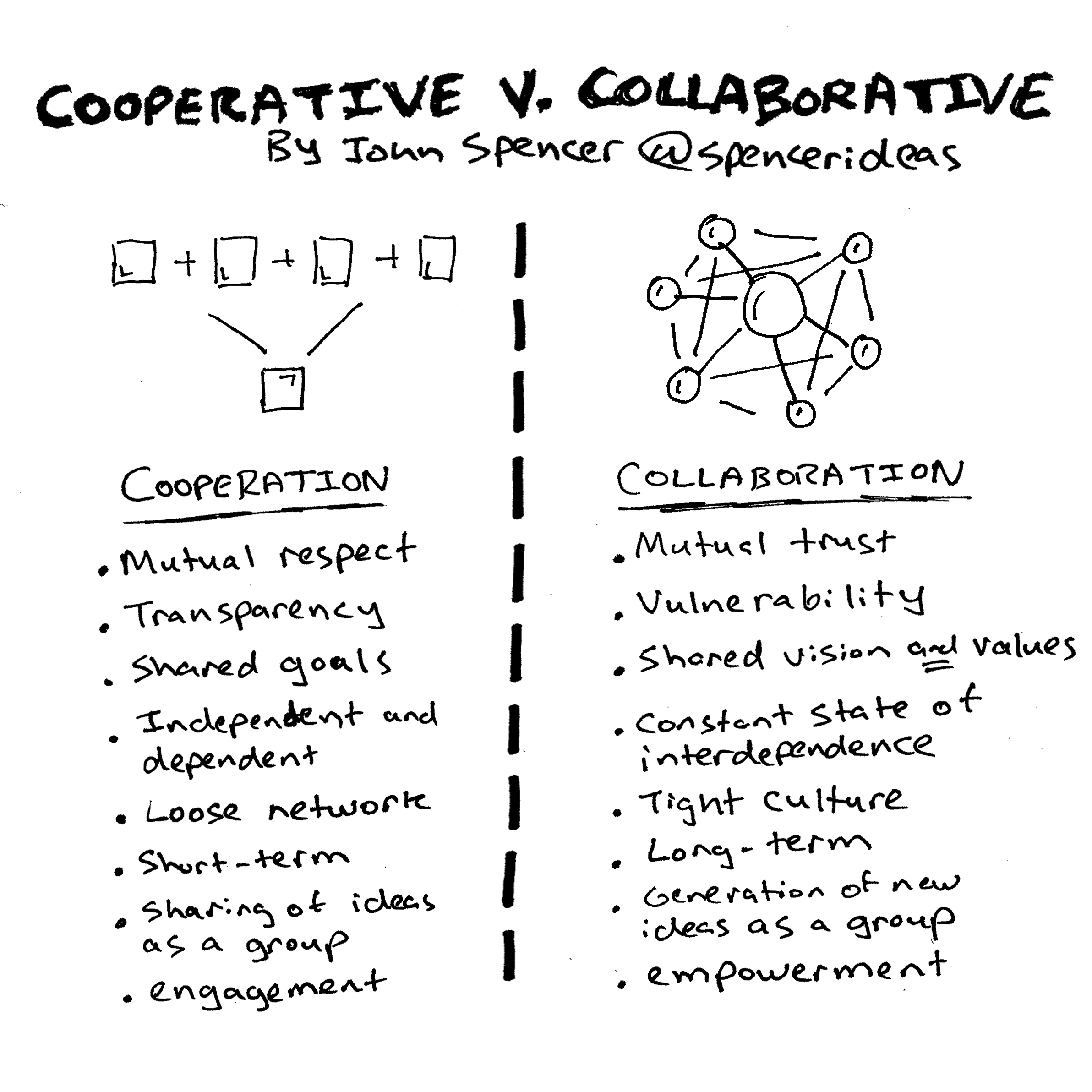
Collaboration vs. Teamwork
The end result of collaboration or teamwork is often the same. When a group collaborates, they are working together toward a shared goal. Everyone in the group has the same vision in mind. The same applies to a group that works as a team, they too work together toward a shared goal. Everyone is committed to a single outcome.
So what’s the difference?
When a group functions as a team, they are working as individuals. Everyone has their identified task which contributes to the outcome. A great example is a baseball team. Everyone has their own job – catcher, pitcher, third baseman – but they all have the same goal. A successful team depends on having a strong leader to guide the team toward the goal. If you’ve got a strong leader and a clear outcome, it’s not essential that team members like each other. This is unnecessary to complete the project, because the leader controls the work of the group.
For collaboration, the group not only has to work together, they have to think together. The end product comes from the efforts of the group. This means collaborators are equal partners – there is no leader. An example of a collaboration would be a devised theatre piece where there is no script and the group has to work together to create an end product.
Where collaboration breaks down is when students are inflexible with their contribution. Collaborators have to trust each other, respect the opinions of others, and engage in negotiations toward the final product. The best collaborators are not just creative, they are flexible. They know when to let other ideas take the lead. Flexibility is key with collaboration.
It’s important to know how to be a team player – everyone has to do their specific job well – from lighting board operator, to ensemble actor, to stage manager. It’s the job of the director to bring the team together and keep everyone on task. Even if there are no strong bonds between team members, they can be effective team players.
With collaboration, it’s important for people to learn how to give and take within a project. It’s difficult to share power and to accept your idea is not always the best idea. A clear goal is essential in a collaboration, so that the project doesn’t descend into argument.


